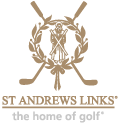
Machines with flail attachments are used to rip through the long grasses which then collect any clippings that arise from the subsequent practice.
The right kind of rough
The greenkeeping team are currently hard at work thinning out the roughs via cultural methods. Machines with flail attachments are used to rip through the long grasses which then collect any clippings that arise from the subsequent practice. The clippings are taken to be composted along with any other organic matter collected by the machines. The end result is playable golfer’s rough which also acts as good hunting ground for the raptors including kestrels, buzzards and the merlins that we have onsite.
We have also been involved in a project at the recently refurbished British Golf Museum here in St Andrews to restore a patch of land which had been disused since the building’s redevelopment work. We worked alongside a team of gardeners and our role was to supply native grasses and gorse which could be found on the Links. Our own gardener, Malcolm Talbot, grew heather from seed which was harvested from the Old Course and the end result will be a marvellous natural area which can be enjoyed by all who visit the Museum, including the wildlife! We’ll let you see the finished article soon.
The birdlife on and around the Links has been incredible of late with upwards of 40 fieldfares noted along with short-eared owls, stonechats and redshanks, whereas the left hand side of the eighth tee of the Jubilee Course is showing red throated divers, great crested grebes and a solitary Slavonian grebe – the nosey harbour seals make an appearance now and then too so keep a look out if you’re passing by.
Above: Short-eared owl on the Jubilee Course. Below: Redshank by the Swilcan Bridge.
Finally on the wildlife front, the American mink seems to have moved on which is great news as these predators will eat practically anything they stumble upon. It was last seen on the Eden Course a few weeks ago so hopefully that’s the last we’ll see of this semiaquatic mammal for the foreseeable future.
Words by James Hutchinson, Environmental Officer
Related Posts
Subscribe below for email updates on our latest posts
Subscribe





